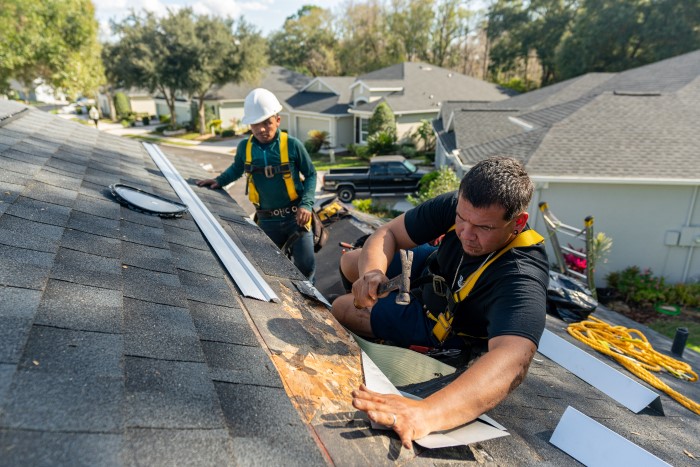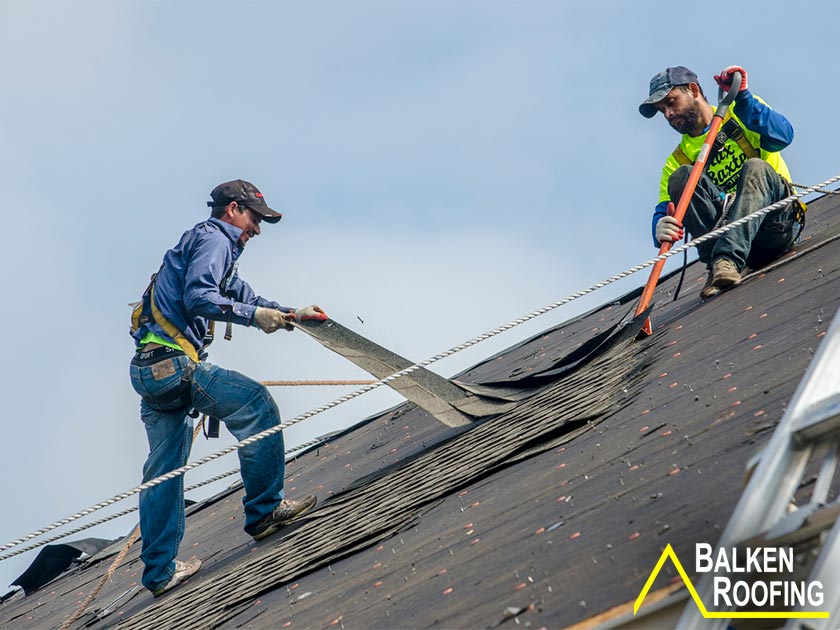Roofing Companies Oahu: Trusted Specialists for Your Roofing Needs
Wiki Article
Understanding the Different Kinds Of Roofings: A Comprehensive Guide for Homeowners
In the realm of homeownership, selecting the ideal roof covering design is a choice that carries considerable ramifications for both capability and aesthetic appeal. With a selection of alternatives-- varying from the typical gable to the modern level-- each type presents distinct advantages and obstacles that should line up with the house owner's ecological considerations and certain demands. Recognizing these distinctions not just aids in making an informed selection however likewise influences long-lasting upkeep and power performance. As we explore the ins and outs of different roofing types, it comes to be noticeable that dimension does not fit all; the ideal option may amaze you.Saddleback Roof
Gable roofs, identified by their triangular form, are amongst one of the most preferred roofing styles due to their simpleness and effectiveness in shedding water and snow. This style includes 2 sloping sides that satisfy at a ridge, enabling for reliable drainage and minimizing the threat of water accumulation. The high pitch commonly related to gable roofs improves their capacity to take care of hefty precipitation, making them suitable for various environments.In enhancement to their functional advantages, saddleback roofs offer aesthetic versatility. They can be adjusted to numerous building styles, from typical to modern homes. The layout can likewise fit extra features such as dormer windows, which boost natural light and air flow in the attic room area.
Additionally, gable roofings supply sufficient area for insulation, adding to energy effectiveness. Homeowners can select from a selection of roof covering products, including asphalt shingles, steel, and tiles, better boosting customization choices.
In spite of their benefits, saddleback roofs may call for additional assistance in areas vulnerable to high winds or heavy snowfall. Generally, the gable roofing system continues to be a popular selection because of its blend of performance, sturdiness, and aesthetic allure.
Flat Roofs
Level roofs are commonly acknowledged for their minimal layout and functional applications, specifically in industrial and commercial settings (oahu roofing). These roofings include a almost horizontal or straight surface area, which allows for very easy construction and functional space utilization. While they may lack the aesthetic charm of angled roofs, flat roof coverings provide countless advantages, especially in city atmospheres where making the most of area is crucialAmong the primary benefits of flat roof coverings is their accessibility. Homeowners can use the roofing system area for different purposes, such as rooftop yards, balconies, or photovoltaic panel installations. In addition, level roofs are typically more economical to install and maintain compared to their sloped equivalents, as they need fewer materials and labor.
Typical materials utilized for flat roof coverings consist of built-up roof covering (BUR), modified asphalt, and single-ply membranes, each offering distinct advantages. In general, level roof coverings serve as a adaptable and practical choice for many home owners and services alike.
Hip Roofs
Hip roofs are identified by their sloped sides that merge on top, forming a ridge. This design is distinct from gable roofs, as all four sides of a hip roofing system incline downwards toward the wall surfaces, providing a more secure structure. The angle of the slopes can differ, permitting adaptability in building aesthetic appeals and capability.One of the primary advantages of hip roofing systems is their capability to withstand heavy winds and adverse weather condition problems. The sloped surface areas make it possible for better water drainage, reducing the threat of leaks and roofing companies oahu water damages. Furthermore, hip roofs supply raised attic space, which can be utilized for storage and even exchanged livable areas.
However, constructing a hip roof can be a lot more complex and pricey than less complex roof types, such as saddleback roofs. The added product and labor associated with developing the slopes and making sure appropriate architectural stability can cause greater expenses. Regardless of these drawbacks, many house owners prefer hip roofings for their durability, aesthetic charm, and capacity for energy performance.
Mansard Roofing Systems
Mansard roof coverings, frequently acknowledged by their unique four-sided style, attribute 2 inclines on each side, with the reduced incline being steeper than the upper. This building design, stemming from France in the 17th century, is not only visually attractive yet practical, as it optimizes the usable space in the upper floorings of a structure. The steep lower incline permits for even more headroom, making it an optimal choice for attic rooms or lofts, which can be exchanged living rooms.Mansard roofs are defined by their flexibility, fitting different building styles, from conventional to modern. They can be constructed with different products, consisting of asphalt shingles, slate, or steel, offering homeowners with a range of alternatives to match their preferences and budget plans. Additionally, the design enables the assimilation of dormer windows, boosting natural light and air flow in the top levels.
However, it is vital to take into consideration the possible disadvantages. Mansard roofs might need even more maintenance because of the intricacy of their style, and their steep slopes can be challenging for snow and rain drainage. In general, mansard roofings integrate style with practicality, making them a prominent selection among home owners looking for distinctive architectural attributes.
Lost Roofings
As homeowners significantly look for simplicity and functionality in their architectural layouts, lost roofings have actually emerged as a popular selection. Identified by a single sloping aircraft, a shed roofing system provides a minimalist aesthetic that enhances various home styles, from modern to rustic.One of the primary advantages of a shed roof is its uncomplicated building, which commonly equates to reduce labor and material prices. This style enables effective water drain, reducing the risk of leakages and water damage. Additionally, the vertical incline gives enough space for skylights, improving natural light within the interior.
Shed roofings likewise supply flexibility in terms of use. They can be effectively incorporated into additions, garages, or outdoor frameworks like structures and sheds. Moreover, this roofing system design can fit various roofing materials, including metal, asphalt shingles, or perhaps environment-friendly roofings, straightening with environmentally friendly initiatives.
However, it is important to consider regional climate conditions, as hefty snow tons may necessitate changes to the roofing system's angle or framework. Overall, lost roof coverings offer a practical and cosmetically pleasing option for home owners wanting to take full advantage of capability without compromising style.
Final Thought


Gable roof coverings, identified by their triangular shape, are amongst the most preferred roof designs due to their simplicity and effectiveness in dropping water and snow. oahu roofing. The steep pitch generally associated with gable roofings improves their ability to take care of heavy rainfall, making them suitable for different environments
While they might lack the aesthetic appeal of pitched roofing systems, flat roofing systems supply many advantages, particularly in metropolitan settings where making best use of space is important.

Report this wiki page